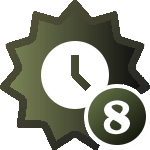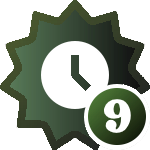
tmarko
Members-
Posts
52 -
Joined
-
Last visited
-
Days Won
3
tmarko last won the day on August 24 2016
tmarko had the most liked content!
About tmarko

Profile Information
-
Gender
Male
-
Location
DFW area
-
Favorite Composers
Aarron Copland, Alfred Reed,
-
Notation Software/Sequencers
Finale 2012, Notion 5, Sibelius 8
-
Instruments Played
Trumpet
Recent Profile Visitors
1,622 profile views
tmarko's Achievements
-
tmarko started following Sketch No. 233 , Ashes , Battle- short music piece for wind orchestra and 2 others
-
pateceramics, Neat! Has sort of madrigal feel to it with some not so renaissance harmonies. Nicely done. Are the lyrics yours? Here's what I saw in the score: m11- do you want a hairpin in the sop 1? mm35,36- The "poco rit." is not needed in the inner voices. Above Sop1 and piano is fine. Also, the caesura is missing in the piano part. m47- see above. That's all I saw. As a side note, since the piano part is "rehearsal only," if you're able, I would reduce the staff size to about 90% and add just a bit more space between it and the vocal parts. But that's just me. Tim
- 11 replies
-
- a cappella
- ssa
-
(and 4 more)
Tagged with:
-
Battle- short music piece for wind orchestra
tmarko replied to Rabbival507's topic in Orchestral and Large Ensemble
My apologies, I meant no disrespect. For doing this from a theoretical stand, you've done a good job. I truly believe the piece has a great deal of potential, which is why I'm trying to help. Check these links out. Hopefully they will give you an idea of what wind ensembles are capable of. https://www.youtube.com/watch?v=3AgLeskIp40 https://www.youtube.com/watch?v=nTjZhYgJ-Bc https://www.youtube.com/watch?v=hrPDguuxw7o These are some standard wind pieces by various composers. This link will take you to a site that contains recordings along with scores. The band you are looking to get a performance with is probably a grade 3 1/2 to 4. https://www.youtube.com/channel/UCIyLgYYgaf2yqb5DnkOxu4Q/videos Hopefully these will help you to see and hear the ensemble you have chosen. As to the eng. horn, just be careful to not let them play anything that will interfere and over take the soloist. Definitely pp. As I said, I'm not trying to be a jerk, I just feel the piece is worth the effort. Tim -
Battle- short music piece for wind orchestra
tmarko replied to Rabbival507's topic in Orchestral and Large Ensemble
Eitan, Have you ever played in a concert band? I'm not trying to be a jerk, just trying to get a feel for where you're at. You feel there are to many voices, and in reality, there aren't enough. The wind band has an incredible range of tonalities available. Many more advanced pieces have even more than I suggested to you. Bass over timpani because in band literature, that's just the way it's done. Not a good answer, but it's what conductors expect to see. Also, trumpets go over the horns and baritone goes under the T-bones. (In the score, Baritone/Euphonium is written in bass clef. You need to include a treble Bb part for the players as many are converted tpt. players) Harp requires a grand staff, even if only playing treble notes. The staff dictates the hands. Don't ruin the English horn solo. Change the background. That can be a highlight of the piece and doubling will take that away. Bass clarinet will sound as you have written, but the transposed part has to be in treble clef. Clarinet players are used to reading ledger lines below the staff. (In the first bar, the clarinets lowest note is an A. They still have more room to go down.) It's also one of the most intense registers for the clarinet family. Don't think of using the 2nd and 3rd parts as octaves. Use them to add depth to the chord. The hit you have on beat 2 in the first measure (appears to be Cm7/Ab) I would keep Tpt. 1 on the G, and possibly C in Tpt. 2 and either G or Bb in Tpt. 3. Nice open voicing with low G or tighter with the Bb. Just an idea. Same thoughts with the clarinets. Hope this helps. Tim -
Battle- short music piece for wind orchestra
tmarko replied to Rabbival507's topic in Orchestral and Large Ensemble
I noticed on another thread that you were still seeking comments on this piece. Overall it's a good piece. You have a lot of good ideas and for the most part you orchestrated quite well. As has already been mentioned, wind band music involves more parts than what you have written for. I've attached a score template that I would use for this ensemble to give you an idea of what we're talking about. This band is advanced enough and large enough for this type of scoring. That being said, when you look at the score, please note how the instruments are placed and bracketed. Also note how many parts are getting written for. This is a pretty standard layout for a group of this level. A piece like this deserves to be presented professionally and properly. Page one of your score (any ensemble for that matter) needs to include all the instruments needed. It wasn't until the second page that I saw you had F Horns and even later for the harp and English Horn. ( If you have questions about this, I'd be happy to help.) Band scores are usually transposed except for rare instances. Regarding the writing, don't get fooled by your midi rendering. You have a great Eng. Horn solo written, but they are competing with a number of heavier instruments. The poor player may not even be heard with the background you have. Possibly thin it out to voices that are able to stay in the background. I didn't see a harp player in the video (I didn't watch the whole thing). Do they have a harpist? If so, you need to rethink the harp part. I don't think it's playable as written so check with the player to be sure. (I'm not a harpist and am still working on learning the ins and outs) Bass Clarinet should be in treble clef (transposes down a ninth). Something else to remember when writing for a band at this level, the difference in abilities between the first chair player and last chair could be quite extreme. Looking at your trumpet part and listening to the video, I don't think the whole section could play the part as written due to the range. Take advantage of the second and third part to fill the chord as well as putting the part in a range the lower chair players can handle. Again, this is a nice work, just a bit of refining. For a first effort at a larger ensemble, you did a great job. Hope this helps! Tim -
Weepe O mine eyes
tmarko replied to Monarcheon's topic in Incomplete Works; Writer's Block and Suggestions
Nice work , Blaire. Here are the possible problems I saw. m8- harmonically sop and bass c to e. Not sure if the passing tones negate the parallel movement. this may or may not be. m28- alto and bass m29 into 30- alto bass m31 into 32- again alto bass. This may be another passing tone situation. My only other observation is regarding our time signature. You've notated cut time, could it be 4/2 instead? Again, very nice work. Hope this helps. -
Music Notation Software Recommendations?
tmarko replied to Gayzelle's topic in Advice and Techniques
I use Finale for final engraving but I write and render with Notion. I don't write with contemporary techniques as Luis does so I haven't encountered these limitations. Notion is very intuitive to use and has an ok set of packaged sounds, but it can also use any VST you may choose in the future and is able to be customized for each. I use GPO and the EW libraries and both work well. The price is about $150US and there are crossgrades available if you have another notation program. Finale will work with other VSTs but I only use GPO with it. They are both made by the same company so they are pretty seamless. I also have Sibelius and Overture, but don't use them much. Since the original developers left for Steinberg (Dorico) I'm not sure how much development is going into the future of Sibelius. It will handle other VSTs, but you need to either be a programming genius or by one of the soundsets available for it. Overture has a lot of nice features for playback and can use a variety of VSTs, but it's not very user friendly. Like Luis, I've learned Finale and am most comfortable with it. I use StaffPad also for jotting ideas, sort of an electronic manuscript paper but I wouldn't use it for rendering or final engraving. I tried the Dorico demo and after all the hype, I wasn't that impressed. I know some love it. Like Luis said, get one and use it and allow for the learning curve they all have. If playback is what's important to you, You'll need to look to one that can handle various VSTs. -
Neat idea. I don't do atonal, but found myself caught up in this for some reason. You titled it as a sketch, what are your plans for it? I'm interested in hearing where you go with this. Tim
-
tmarko started following Introspection #1 , Valse de Cirque , Sonatina for Violin and Piano and 1 other
-
Well done. I actually liked the strident horn parts especially at the end. Wake the dancers back up!
-
Luis, thanks for listening. Monarcheon, is the lack of low tones a writing problem or a rendering problem? (Sorry about the minor 6!) Maestro, I'm definitely going to revisit this and try to expand it into a bigger work. Again, thanks to all for your comments. Tim
-
Tobias, I think this is more what Maarten had in mind.
- 16 replies
-
- 2
-

-
This is a great piece to show off the capability of the sax as an ensemble instrument. The nice thing is the versatility and agility of even the low voices. I think the instrument is used so rarely in orchestral music is it has a very "unique" sound that tends to not blend well with the rest of the ensemble. (Concert/symphonic bands don't have this problem as there are multiple players that produce a thicker sound making the sax an easier fit into the spectrum.) Ravel used sax for this reason in his arrangement of "Pictures...", it was easy to make it stand out with it's eerie quality. I've seen more recent composers attempting to use the instrument, some to great results. Besides, if not for the sax, Woody Herman wouldn't have had "Four Brothers"! Looking forward to next weeks video! Tim
- 38 replies
-
- masterclass
- bauer
-
(and 5 more)
Tagged with:
-
While cleaning up my various notes and sketches from my computer, I came across this piece I did a while back. I've long been a fan of "Appalachian Spring", and in particular, the original version for chamber. I decided to attempt to use this type of ensemble but added horns oboe to have a full wind quintet. The second horn was for added color. It was more an exercise in smaller mixed group writing for me. Comments appreciated. Thanks Tim
-
No higher plane, I cheated a bit. I used an existing modulation from the expression tool and altered it to show q=q and put a couple spaces before the first q. The triplet numbering is simple text positioned over top and was just -3-. The font should probably be altered to match the rest of the expressions. Hope that helps. Tim
-
Please add me to the list. Tim
- 71 replies
-
- competition
- summer
-
(and 1 more)
Tagged with:
-
The problem is in relaying the information to the performer. What ever you do, it needs to show an equivalency. This solution is simple, but gives the performer the necessary information. Sorry to do it as an attachment, but couldn't figure out how to show a fragment. Tim






